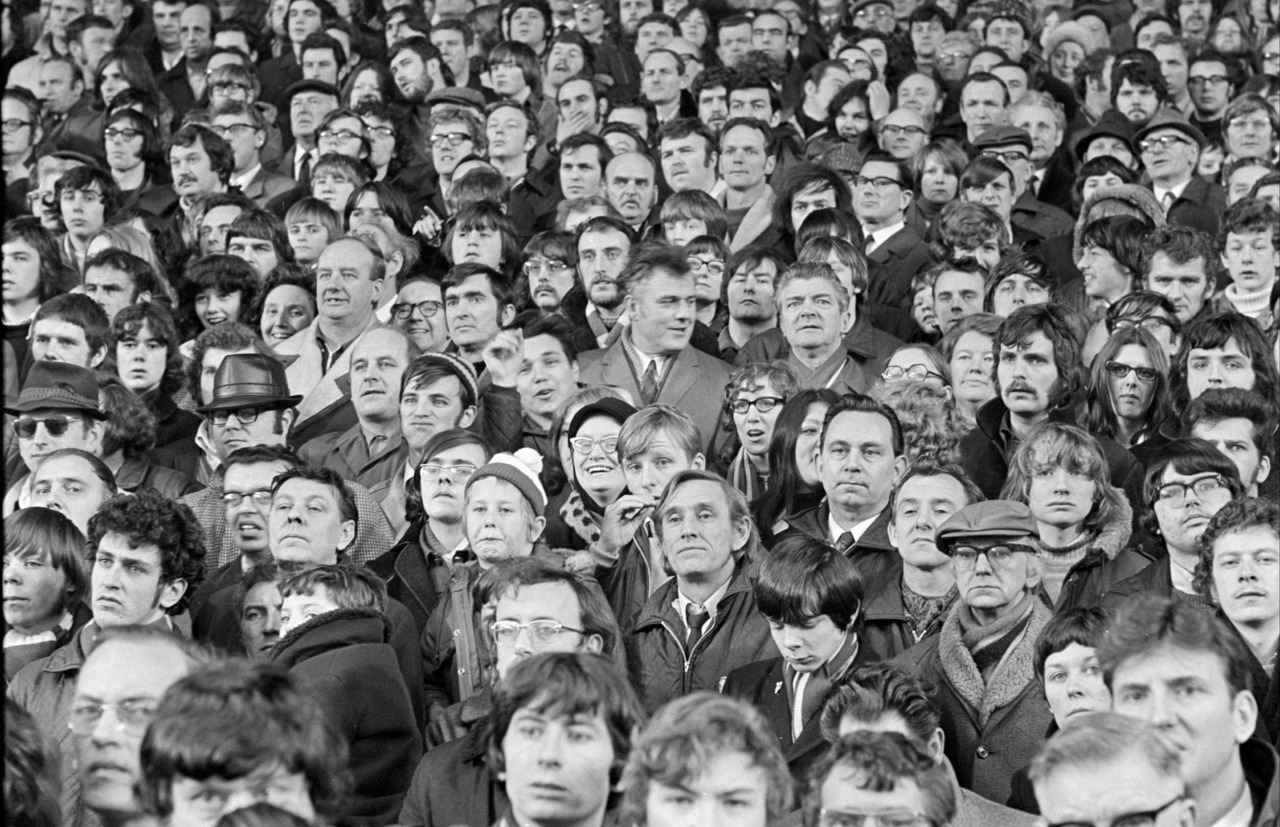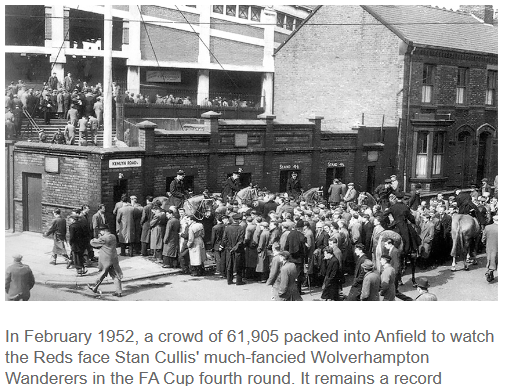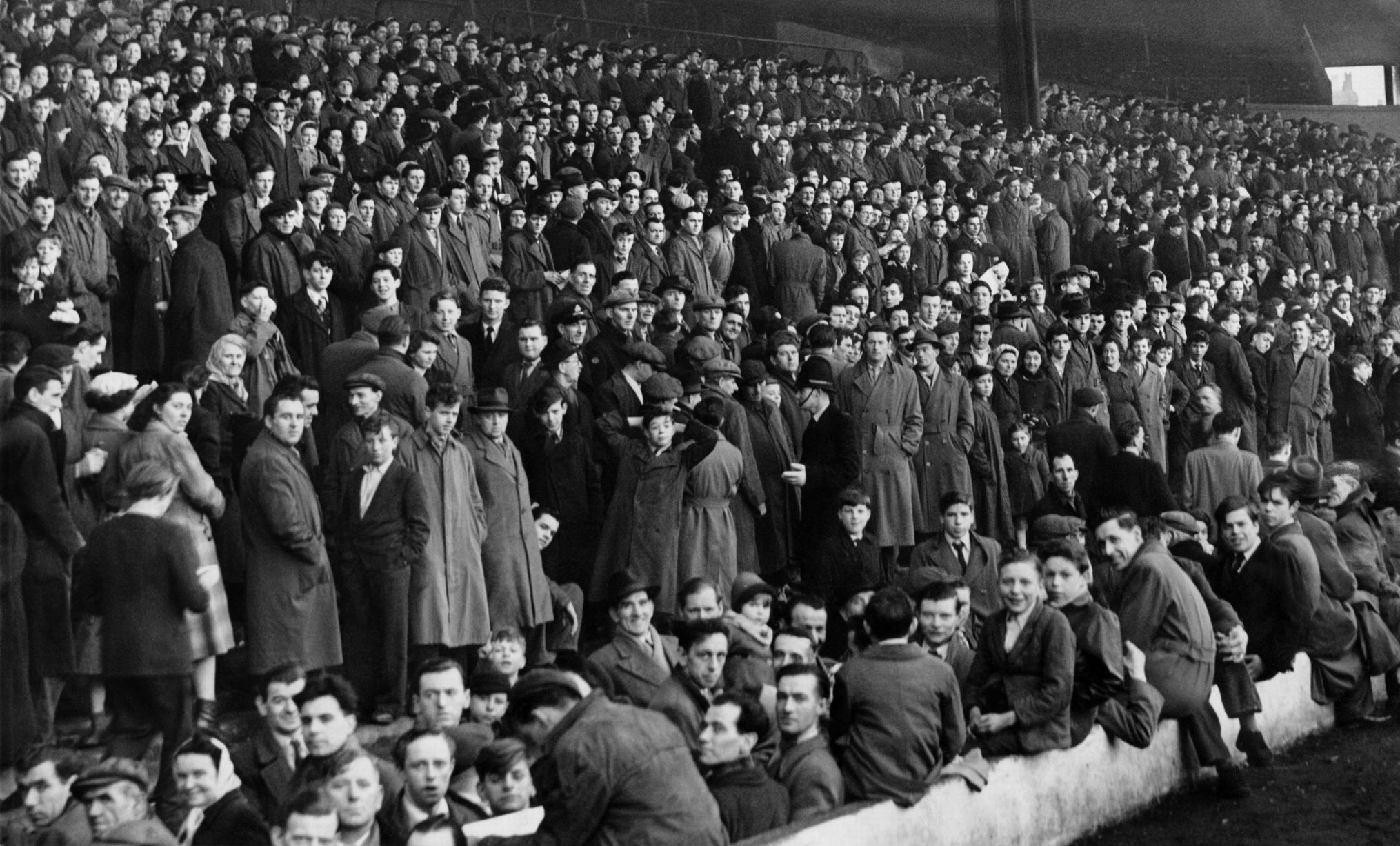Articles
But the crowd called out for more*
Anfield crowds talk with their feet
My friend Alan, a lifelong Leeds fan, could not bring himself to watch, or even listen to, their Anfield match on 29 October 2022, so sure that they would be massacred by the mighty Reds. Leeds were then 18th, with 9 points from 11 games.
Liverpool lost that match with a 1-2 sucker punch, and Alan had resurrected Jurgen Klopp’s interesting question. Are LFC fans instinctively believers or (like Alan) doubters? Romantic or practical? Optimistic or pessimistic? Does the average follower prefer to buy a ticket for a game in which an opponent on better form throws down the gauntlet, or for one we should expect to win? That should be easy to answer by looking at the gate figures against top and bottom clubs. Except, it isn’t. Historically, there are at least half a dozen other significant factors which have skewed the size of a home crowd, plus an overriding one called the Premier League. Another, impossible to measure here, is the degree of bad weather, which caused the lowest gate for five years (28,204) on 7 October 1980 for the visit of Middlesbrough.

The Kop on 29 January 1972 when Liverpool beat Crystal Palace 4-1.
The purist will find that accurate enough figures are not available from before the 1925/26 season as they are largely guesswork, to the nearest 1,000 or even 10,000. The conclusions which follow are therefore based on three subsequent thirty-year seasons, 1925/26 to 1959/60, 1960/61 to 1991/92, and the Premier League era. The six identified factors distorting the gates are:
1 The day of the week on which it is being played. Tuesdays and Thursdays have been the least popular (with Euro matches eating into those nights anyway), the League taking a back seat with no call for more. Tuesdays have witnessed only Chelsea (1949/50) Everton (1968/69 and 1978/79) and Arsenal (2008/09) attracting the largest Anfield crowd of a league season; no club has ever done so on a Thursday. Monday, Wednesday, and Friday gates have been over twice as large. Overtaking them all since 1982/83, Sunday has produced seven highest home league gates of the season, with Aston Villa, Chelsea, Everton, Manchester City, Manchester United, Newcastle United, and Southampton the visitors.
2 The time of day. Before artificial lighting was installed, sunset allowed a full match, with a 3:00 pm start, only from mid-February to mid-October. Evening matches after long working days, formerly confined to the summer months, were facilitated by the advent of floodlights in 1957, until the Premier League sold its soul to television; TV is now the timekeeper of all it surveys, additionally determining the quality of lighting required for broadcasting.
3 Was it played on a public holiday? Boxing Day, New Year and Easter have always attracted large crowds. The last home match on Christmas Day was in 1956, before which it was not only common but also immediately followed by a Boxing Day event. (The latter survives as a regular occurrence, still drawing crowds larger than usual.)
4 Were the opponents traditional rivals, no matter where they were currently placed in the league table? In 1926/27 and 1992/93, Everton pulled in the largest LFC crowds of the season when they were 21st and 17th respectively. In the mid-1960s, visitors from both directions across Stanley Park attracted not just the largest crowd of the home season, but the largest for any game in the Division. Everton was the biggest attraction until after the Second World War, when ex-LFC Matt Busby began to bring his teams to Anfield. (MUFC’s low point had come on a Wednesday evening in 1928/29 when only 8,852 turned up.) Since we returned to Division 1, Everton and MUFC have been neck and neck in the attraction stakes. In the last season of Division 1, for example, the Anfield gates were 39,072 for Everton and 38,669 for Manchester United.
5 The excitement and interest generated by the start of a new season has sometimes been great enough to produce the largest crowd, no matter who the opponent has been – Doncaster in 1954/55, Huddersfield 1956/57, Leeds 1960/61, Stoke 2009/10 and 2013/14, Southampton 2014/15, and Norwich 2019/20, the last on a Friday evening. Another problem using these fixtures is that the league positions for the first few games can be very misleading as good indicators of the opponent’s quality.
Very rarely, the last home game of the season can also draw the largest crowd, depending on circumstances (Leicester 1972/73, Blackburn 1994/95, or Arsenal 1997/98.) More commonly, the feeling that a match at the end of a season will not change anything of significance can have the opposite effect, reducing the number of spectators, who may seem unhappy. The crowd fell by about two-thirds when we just failed to get promotion at the end of the 1958/59 season.
6 Cup or League match? The earlier role of the FA Cup in English society is well known with plenty of stats to back it up. In 12 out of the 20 seasons in which we played an FA Cup match at home (1925/26 to 1959/60) the Cup game drew a bigger crowd than any home league match. In four of those seasons (1933/34, 1937/38, 1951/52 and 1955/56) there were even two FA cup gates which surpassed our largest league gate. Outstanding were 1928/29 when Bolton drew 10,000 more than Everton had done in the league; 1933/34 when, by switching venue to Anfield, Tranmere attracted a crowd of 61,036; and 61,905 watched fourth-round LFC v Wolves in 1951/52 which still remains Anfield’s largest recorded crowd.

The importance attached to these Cup crowds was reflected in the days on which they were played, more than eighty per cent being on a Saturday at 3.00 p.m. It remained normal for the FA Cup to bring in the largest crowd of the season until the mid-1970s, the final example being the novel Sunday match against Brighton on 20 February 1983. The old FA cup fever can still be seen in any modern home game when there is a giant killing in the offing.
By 1960/61, there was a new Cup on the block. The League Cup had the hallmarks of being the brainchild of an administrator rather than a fan, its status confirmed by all rounds (except finals) being played on a weekday, never on a Saturday, with further relegation to Monday or even Thursday. Its low status has become a compensation for those who don't win it. This Cup drew what the Guardian mistakenly called ‘the smallest crowd ever for a competitive game at Anfield’ (9,092 watching Brentford, 25 Oct 1983 with the tie effectively won in the first leg), and has since been the first target for those who have tried to decrease the pressure on players by reducing the amount of game time they play.
*
Now, what was all that about the Premier League being an inhibiting factor in judging between doubters and believers? The Premier League era is no longer much use for this purpose because, especially in the last twenty years, its very popularity has slowly eliminated the impact of many of the earlier variables. TV schedules have also introduced some unusual starting times compared with earlier decades, though none quite as odd as the 16:01 pm for the Everton FA Cup game on 5 January 2020 (the day of the Curtis Jones’ curler).
The lowest LFC Premier League gates of the season gradually increased during the 1990s, from 29,000+ in 1992/93 to 38,000+ in 2001/02, the smallest crowds now barely distinguishable from the largest. The gates in 2011/12 for Wolves, Arsenal and Everton were only one different from each other; Newcastle and Watford in 2017/18 shared the largest crowd figure of the season - 53,287. Capacity of the ground is now 53,394; the average attendance is 53,053.
*
Thus, desperate punters, planning their Anfield trip on the expectation of seeing particular visitors, are wasting their time, for LFC is now so popular that no amount of taking into account the day of the week, the time of day, choosing the visiting team, etc. will improve the chances of getting a ticket, as the gates are now so similar for all matches. 40,000+ attended every home league match in 2002/03 for the first time, a regular occurrence ever since, the figure rising to 50,000+ with the newly extended Main Stand in 2016/17.
It’s not the crowd calling for more capacity – it’s the rejected ticket applicants, increasing at a rate which has financially justified the new ticket price increase and expansion of the Anfield Road End stand!
*

The Great Spion Kop
So we are now in a position to disregard crowd figures potentially distorted by involving too popular (or unpopular) days and times, public holidays, local rivals, first and last games of the season, Cup matches, and the Premier League era, leaving an almost level playing field on which we might be answer the original question – are we basically believers or doubters – on the basis of gate figures. All the surviving games will have been played starting mid-afternoon at Anfield on a Saturday, against one of the, let’s say, top or bottom three sides in the Division at the start of play.
1925/26 to 1959/60:
Average gate of 50 games against a top-3 club: 37,933
Average gate of 40 games played against a bottom-3 club: 31,448
1960/61 to 1991/92:
Average gate of 44 games against a top-3 club: 45,899
Average gate of 48 games played against a bottom-3 club: 37,875
Totals 1925/26 to 1991/92:
Average gate of 94 games played against a top-3 club: 41,662
Average gate of 88 games played against a bottom-3 club: 34,959
The result is clear – over the decades, the average Liverpool fan has been about 20 per cent more likely to buy an Anfield ticket for a game against a top-3 club than against a bottom-3 club.
An average like that might mean little to the individual, of course, especially the many who would attend both anyway; but the question for each one of us remains – if you can afford only one ticket, would you pay to see a top-3 or bottom-3 opponent? If you go off the result of these Saturday afternoon matches, and your priority is to see LFC win the game (or at least to avoid seeing them lose!), the answer slightly depends on which 30-year period you are in.
Tables v top 3 sides: won drew lost
1925/26 to 1959/60 25 10 15
1960/61 to 1991/92 19 17 8
Tables v bottom 3 sides
1925/26 to 1959/60 26 10 4
1960/61 to 1991/92 37 6 5
In summary, the results bear out common sense – you would have been much more likely to see a victory against a lower quality team. Yet, twenty per cent more of us paid to watch higher quality teams. We want to be in a crowd calling out for more against good opposition.
A triumph of belief over doubt.
*In homage to ‘A whiter shade of pale’ (2006)
Article by Dr. Colin Rogers for LFChistory.net


